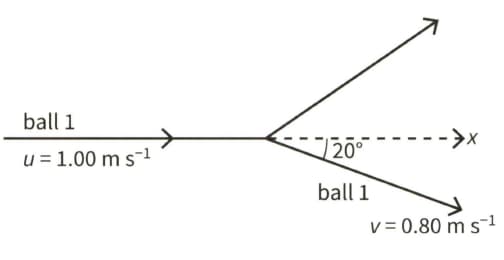David Sang and Graham Jones Solutions for Chapter: Momentum, Exercise 7: Questions
David Sang Physics Solutions for Exercise - David Sang and Graham Jones Solutions for Chapter: Momentum, Exercise 7: Questions
Attempt the practice questions on Chapter 6: Momentum, Exercise 7: Questions with hints and solutions to strengthen your understanding. Physics for Cambridge International AS & A Level Coursebook 3rd Edition Digital Access solutions are prepared by Experienced Embibe Experts.
Questions from David Sang and Graham Jones Solutions for Chapter: Momentum, Exercise 7: Questions with Hints & Solutions
A snooker ball strikes a stationary ball. The second ball moves off sideways at to the initial path of the first ball.
Use the idea of conservation of momentum to explain why the first ball cannot travel in its initial direction after the collision. Illustrate your answer with a diagram.
Figure 6.17 shows the momentum vectors for particles 1 and 2, before and after a collision. Show that momentum is conserved in this collision. Draw the vector triangle that shows that momentum is conserved in the collision. Show the value of each angle in the triangle.
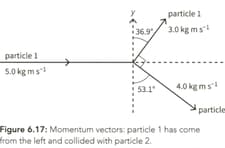
Figure shows the momentum vectors for two identical particles, and before and after a collision. Particle was at rest before the collision. Show that momentum is conserved in this collision.
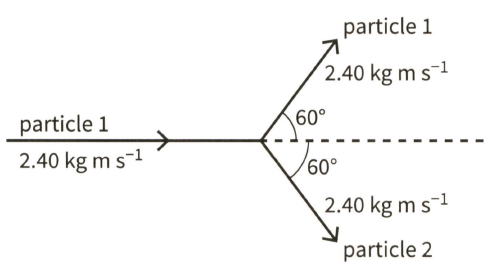
A snooker ball collides with a second identical ball as shown in Figure
Determine the components of the velocity of the first ball in the directions.
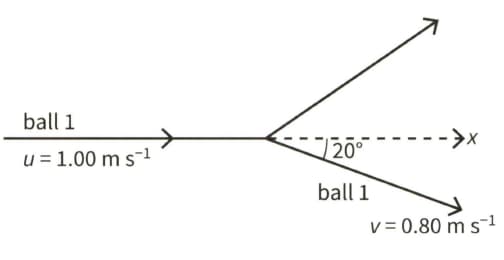
A snooker ball collides with a second identical ball as shown in Figure
Hence, determine the components of the velocity of the second ball in the directions.
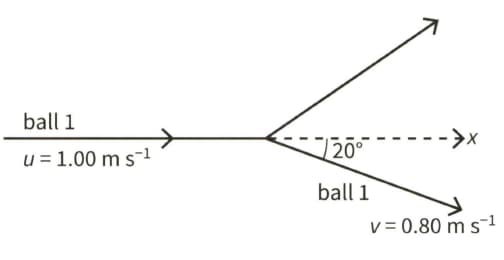
A snooker ball collides with a second identical ball as shown in Figure
Hence, determine the velocity (magnitude and direction) of the second ball.
